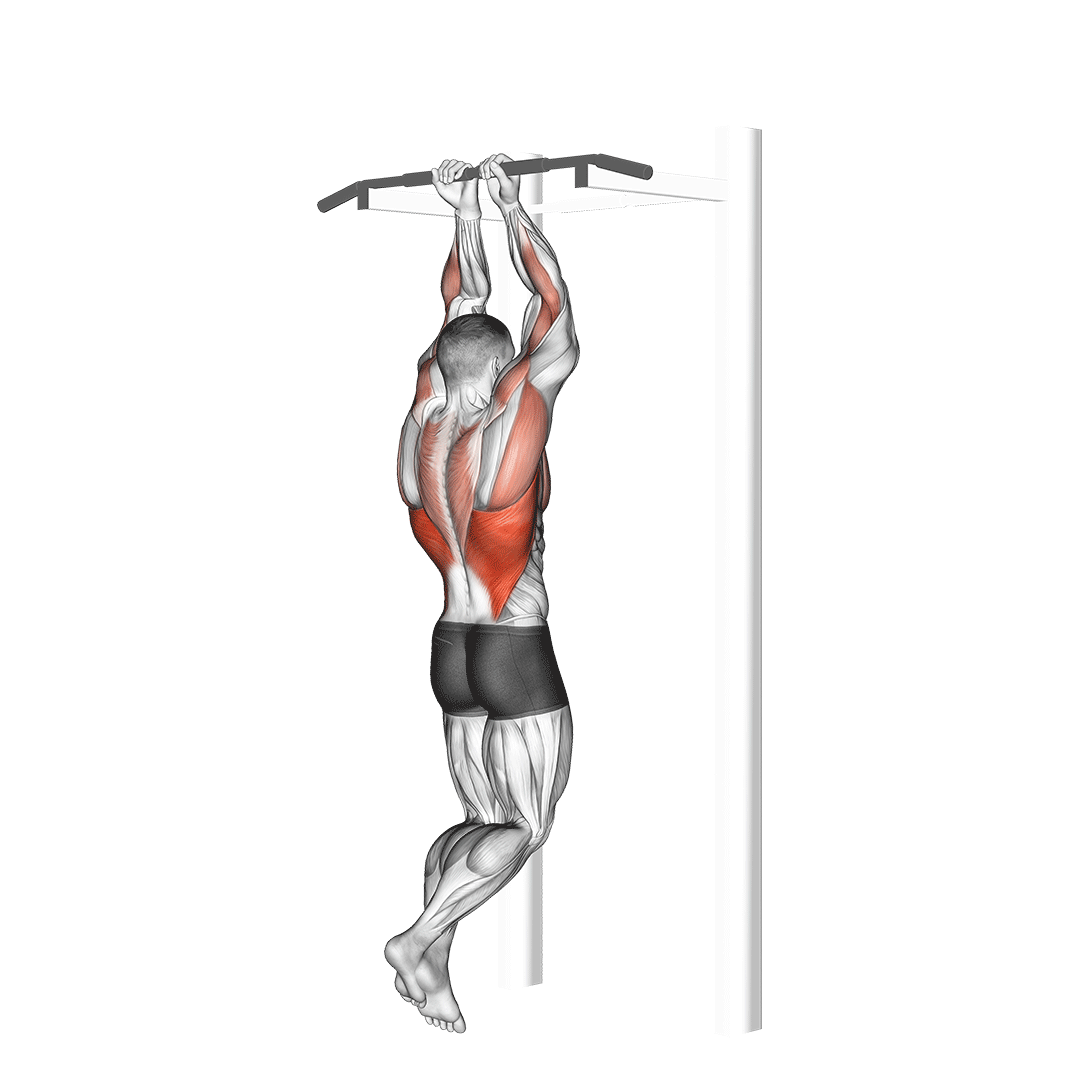The Close Grip Chin-Up is a powerful exercise for building strength and defining your lats while enhancing upper body conditioning. This compound movement not only targets your back but also engages your biceps, trapezius, and rhomboids, making it an efficient choice for comprehensive muscle development. By incorporating this exercise into your routine, you can improve your performance in other lifts and boost your posture for everyday activities.
For optimal results, integrate the Close Grip Chin-Up into your regimen two to three times weekly, ensuring you allow adequate recovery time for muscle growth. Start with a focus on form; avoid swinging or using momentum, and prioritize controlled movements with core engagement. If you’re new to this exercise, consider using an assisted chin-up machine or resistance bands to gradually build strength.
All you need is a sturdy pull-up bar, available at most gyms or easily set up at home. Are you ready to take on the Close Grip Chin-Up? With dedication and consistency, you can master this move and feel the surge of strength in your lats. Let’s start your fitness journey today!
How to Do a Close Grip Chin-Up

Begin by hanging from a pull-up bar with your palms facing you and hands placed close together, about shoulder-width apart. Your arms should be fully extended, and your body should be straight with your legs hanging down.
- Engage your core and pull your shoulder blades down and back.
- Drive through your elbows to pull your body upward towards the bar.
- Keep your chin tucked and focus on bringing your chest to the bar.
- Pause briefly at the top of the movement, then lower yourself back down in a controlled manner.
- Repeat for the desired number of repetitions.
Inhale as you lower your body and exhale as you pull yourself up, maintaining a steady breathing rhythm throughout the exercise.
Level Up Your Fitness: Join our 💪 strong community in Fitness Volt Newsletter. Get daily inspiration, expert-backed workouts, nutrition tips, the latest in strength sports, and the support you need to reach your goals. Subscribe for free!
Level Up Your Fitness: Join our 💪 strong community in Fitness Volt Newsletter. Get daily inspiration, expert-backed workouts, nutrition tips, the latest in strength sports, and the support you need to reach your goals. Subscribe for free!
Common Mistakes
- Neglecting Core Engagement: Failing to engage your core can lead to poor form and increased strain on your lower back. To avoid this, actively tighten your abdominal muscles before starting the movement.
- Using Momentum: Relying on swinging or using momentum to pull yourself up reduces effectiveness and increases the risk of injury. Focus on controlled movements by initiating the pull strictly with your arms and back.
- Improper Grip Position: Placing your hands too far apart can diminish the focus on your lats and make the exercise less effective. Ensure your grip is shoulder-width apart to maximize lat activation.
- Not Tucking Chin: Failing to tuck your chin can lead to poor neck alignment and unnecessary strain. Keep your chin tucked throughout the exercise, aiming to bring your chest to the bar instead.
- Rushing the Descent: Lowering yourself too quickly can result in muscle strain and prevent proper muscle engagement. Take your time during the descent to maintain control and optimize muscle recovery for the next rep.
Benefits of Close Grip Chin-Up
- Enhanced Lat Development: The close grip chin-up effectively targets the latissimus dorsi muscles, leading to increased muscular hypertrophy and improved overall back width and strength. This exercise’s emphasis on the pulling motion helps build a well-defined and powerful back.
- Improved Grip Strength: By using a narrower grip, the close grip chin-up necessitates greater engagement of the forearm muscles. This builds grip strength, which is crucial for various other lifts and daily activities, ultimately enhancing your overall functional performance.
- Core Activation: Engaging your core throughout the movement plays a vital role in stabilizing your body. As you perform the chin-up, the activation of the abdominals and obliques contributes to better core strength, essential for overall body coordination and balance.
- Upper Body Endurance: Repeatedly lifting your body weight challenges both muscular strength and endurance. Mastering the close grip chin-up can boost your performance in other upper-body exercises, making it a key component in functional fitness and athletic training.
- Joint Stability and Mobility: This exercise promotes stability within the shoulder joints due to the necessity of scapular retraction and humeral control throughout the movement. Improved shoulder stability can contribute to preventing injuries, particularly for athletes and active individuals.
Exercise Variations
Alternative Exercises
Safety Precautions
Before attempting the close grip chin-up, ensure that you perform a thorough warm-up to prepare your muscles and joints. Focus on warming up your shoulders, arms, and core, as these areas are heavily engaged during the exercise. Dynamic stretches, such as arm circles and shoulder mobility exercises, can greatly enhance your range of motion and reduce the risk of injury.
While performing the close grip chin-up, maintain proper form throughout the movement. It’s crucial to avoid swinging or using momentum to pull yourself up, as this can lead to strain on your shoulders and back. By keeping your body straight and controlling the motion, you not only target the intended muscles effectively, but you also minimize the risk of injury. Remember to listen to your body; if you feel any pain or discomfort, stop the exercise immediately.
Finally, ensure that the pull-up bar is securely mounted and can support your weight. Inspect the equipment before each workout session. Using accessories like chalk can help you maintain grip if your hands tend to sweat. Consider using resistance bands for support, especially if you are new to chin-ups or building strength, as it can help you safely progress to the full movement while ensuring your safety.
Interested in measuring your progress? Check out our strength standards for Chin Ups.








